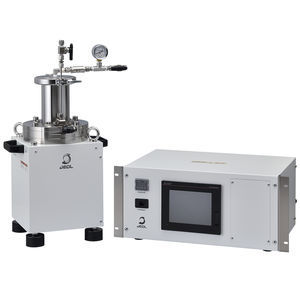
RF atmospheric plasma generator TP high-frequency







Add to favorites
Compare this product
Characteristics
- Type
- RF, high-frequency
Description
Generates thermal plasma at about 10000 degrees by high-frequency induction through a physical / chemical reaction process, enabling nanoparticle synthesis and thick film synthesis (film formation)
Features
Principles・Features
The radio-frequency thermal plasma operates at atmospheric pressure, or in a low-pressure environment close to atmospheric pressure, concentrating the high-frequency power at a specific location to spontaneously generate an approximately 10,000 degree plasma from various gases using Electromagnetic induction.
This thermal plasma is an area of the arc discharge. By introducing materials (powders, gas, fluids) into the plasma it is possible to induce vaporization, melting, dissociation, and chemical reactions for applications such as nano-particle synthesis, powder spherodization and reaction, film formation, and dissociation of harmful gases.
Compared to the direct current (DC) arc discharge, a larger plasma volume can be obtained
The gas flow is also better than that of the DC plasma. Since the flow rate is an order of magnitude slower, it is possible to adequately heat the materials to induce the desired reactions.
Since there are no electrodes, there is no contamination from electrode materials, enabling high-purity processing.
A wide range of gases can be used, including oxidative, reductive and corrosive gases
Fine particles can be created, with a fineness on the nano-order, a level beyond the capability of mechanical pulverization
Being able to make use of the reactions of high-energy chemical species, such as atoms, ions, excited molecules and radicals, opens the possibility to create new substances and materials.
Catalogs
No catalogs are available for this product.
See all of Jeol‘s catalogs*Prices are pre-tax. They exclude delivery charges and customs duties and do not include additional charges for installation or activation options. Prices are indicative only and may vary by country, with changes to the cost of raw materials and exchange rates.







